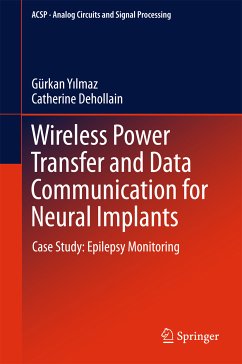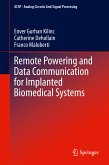- Provides complete, system-level perspective for implantable batteryless biomedical system; Extends design example to implementation and long term in-vitro validation;
- Discusses system design concerns regarding wireless power transmission and wireless data communication, particularly for systems in which both are performed on the same channel/frequency;
- Presents fully-integrated, implantable system and hermetically sealed packaging.
Dieser Download kann aus rechtlichen Gründen nur mit Rechnungsadresse in A, B, BG, CY, CZ, D, DK, EW, E, FIN, F, GR, HR, H, IRL, I, LT, L, LR, M, NL, PL, P, R, S, SLO, SK ausgeliefert werden.









